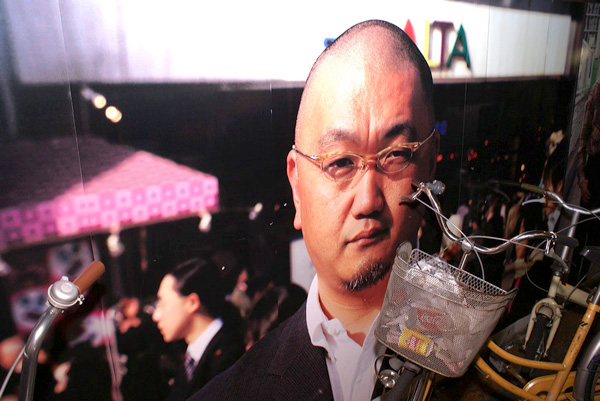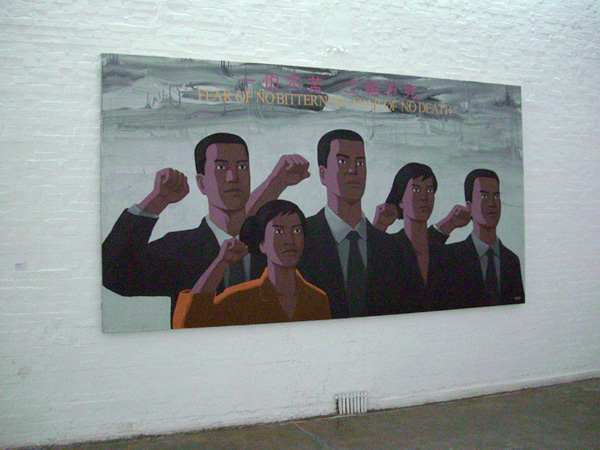| The Digital Century |
 |
| Written by Rogelio Villarreal |
|
Fifty years ago, when I was born, the world of the late 20th and early 21st centuries was unconceivable, even in the most far-fetched sci-fi movies. It is not the comfy fun world of The Jetsons nor the catastrophe depicted in Planet of the Apes, but a more complex and engaging one, closer to the one foreseen in Blade Runner in 2019 Los Angeles or, unfortunately the one portrayed in a desperate New York City in Soylent Green.
Nowadays, the overwhelming technological and scientific advancements taking place in every aspect of our lives are a commonplace for the younger generations, who for evident reasons have a better access to these advancements. Millions of children and teenagers can’t conceive a world without iPods, cell phones with cameras and GPS, chat rooms, social networks and on line games that grow in sophistication by the day. Certainly, they would not enjoy as much a film that does not feature all those spectacular digital special effects. Needless to say, the transformations of education, art, journalism and research that have been brought on by the worldwide endless virtual hyper-library, would amaze Borges himself, even though he somehow foretold it in his Aleph. Man’s arrival to the moon in 1969 and the recent discovery of the human genome –just to mention a couple of major scientific breakthroughs- would have been impossible to achieve without digital technology.
There was no TV -not even a black and white model- in my parent’s house until the mid-60’s and a telephone (oh wonder of wonders!) until a few years later. The yellowish family pictures were kept in thick black cardboard albums; my first school assignments were typed in a modern Olivetti machine. Time and time again, I had to consult historical dates and names in my dad’s library.
Now that I’ve mentioned my father, he worked as a linotype machine operator, copywriter and editor. So what in the world is a linotype? The linotype is kind of a huge typing machine with a bucket filled with melted lead that was used in the printing process of books, magazines and newspapers. Nowadays it belongs in a museum, such as the one exhibited in Mexico City’s publishing house Fondo de Cultura Economica. In this day and age, printing is made with silent offset machines that are the size of an 18-wheeler, using a computer. A laptop with editing software is all you need to design a publication.
Long gone are the huge worktables, all the cutting and pasting made by hand, and so are the cumbersome photo-editing machines resembling the contraptions created by the mad scientists of the campy Santo movies of yesteryear. Nowadays, we don’t have to take mechanical originals to the printers, we can send the text via e-mail, no matter if the publishing house is in Hong Kong or Shanghai.
Over 20 years ago, Pedro Meyer made a digital portrait of myself. The quality was not the best, since it was a huge image made out of big black dots that only bore any resemblance to my face by being seen from afar.
There is a huge gap between that picture and the ones now made by Pedro with a digital technique that has reached utter perfection. Anyone that has seen a digital image made by Pedro is aware of the conceptual revolution implied in the ability to make seamless digital compositions made of two or more takes that were shot in different places and moments.
Anything that happened before the digital era is ancient history for the children and teens that have grown up and been educated in the digital technology environment. The use of digital technology such as computers and the Internet is a natural thing for them. Links and hypertext reflect the way in which the human brain and non-linear thinking work, simultaneously processing images, concepts and jumping from one subject to the other, going back or forward in time and space, either intentionally or by free association, very much like surfing the web.
Digital technology is also used for espionage, war and destruction. In this sense the world is no better than before. In some countries, the loathing towards democracy has led some governments to ban the use of the Internet to the population, and even watch and harass them using this medium, as the Chinese government did to the blogs of dissident writers Tsering Woeser and Wang Lixiong for speaking in favor of Tibet’s independence. “The couple has been under house arrest since the beginning of the riots last March” -reported mexican writer Eve Gil- and continues:
The censorship in the Internet has spread to SMS messaging with the collaboration (or complicity?) of companies such as Yahoo and Google. China has the best filtering and censorship system in the world, and has used it to incarcerate at least 50 people. (from the article “China Reinvented”, published in Replicante magazine, issue 16.
Another example of a blatant disregard to freedom of speech takes place in Cuba, where a very small part of the population owns a computer and has Internet access. A report of the organization Journalists without Borders states that:
Although it is true that there are problems to go on line in Cuba, it is hard to believe that www.desdecuba.com has had to deal with technical difficulties for ten years. These kinds of restrictions go against the recent government measures to facilitate the access of Cubans to mass media, including the Internet. One cannot exist without the other. The signs of openness given by Raul Castro’s government should include more respect for freedom of speech. Since March 20th 2008, the website www.desdecuba.com cannot be accessed from public places such as cyber-cafes or hotels. The very few private connections used for professional reasons or clandestinely, take at least 20 minutes to load the home page. Making comments is practically impossible.1
The internet is fiercely controlled by the state, there is a single network that can be accessed to send e-mails abroad, but it does not allow to surf the web, according to the report of Journalists without Borders: “Access to the internet is three times more expensive and it allows to visit foreign news websites, such as the BBC, Le Monde or the Nuevo Herald (a Miami-based newspaper written in Spanish), but if an address such as “google.fr” is typed, one is redirected to the web page of Cuba’s official newspaper Granma or the Prensa Latina news agency.”
Not surprisingly, Cuba is on the list of “Enemies of the Internet” published by Journalists without Borders, on March 12, 2008. One of Cuba’s –and now of the world- most popular websites, which has received the 2008 Ortega y Gasset Award of Digital journalism is Generacion Y. Written by young author Yoani Sanchez, it comments on the everyday life of Castro’s island, featuring sad pictures of run down buildings, policemen arresting homosexuals, broken down electricity meters and the temporary joys of the carnival. Ironically, Yoani does not have a computer in her own home.
Digital technology and its advantages are not for everyone, in spite of its rapid growth. In this sense, it is deplorable that millions of Chinese and Cubans do not have unrestricted access to the most important information, education and entertainment network in human history, but also that millions of people in Africa and Latin America that live in democratic countries –or on their way to democracy-, do not have access either, due to poverty, unemployment and the lack of policies of education and scientific and technological development. Digital technology can make a positive change in the world, but it can only flourish in an environment of freedom, respect and prosperity. We have been through enough wars. If the media are extensions of man -as McLuhan put it-, the new technologies should be at the service of the growth and peaceful development of every man and woman in the planet. __ 1. www.cubanet.org/CNews/y08/abril08/01inter6.html
Rogelio Villarreal August, 2008 **
Rogelio Villarreal is the author of El dilema de Bukowski (Bukowski's Dilemma, Ediciones Sin Nombre, 2004) and El periodismo cultural en los tiempos de la globalifobia (Cultural journalism in the times of Global phobia, Conaculta-Ediciones Sin Nombre, 2006). He is editor-in-chief of Replicante magazine.
As always please joins us with your comments in our forums.
http://www.zonezero.com/editorial/agosto08/august08.html
|










